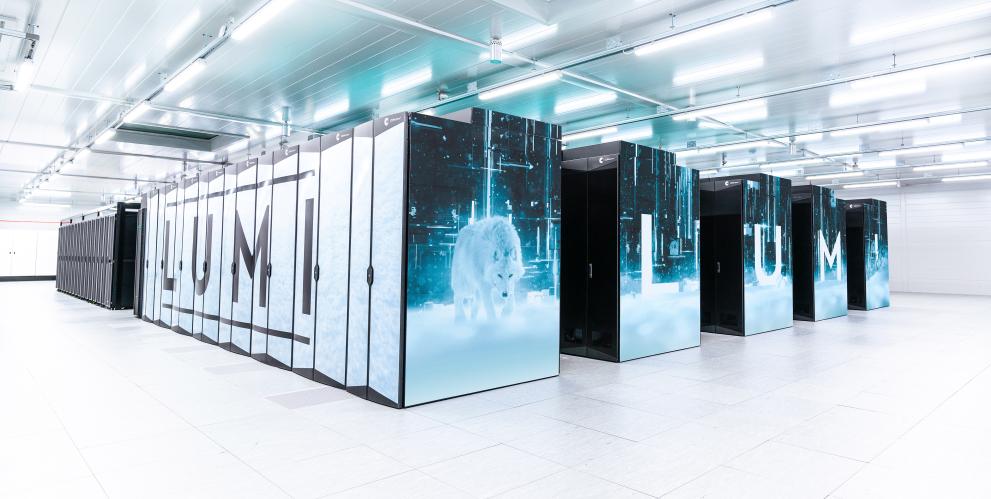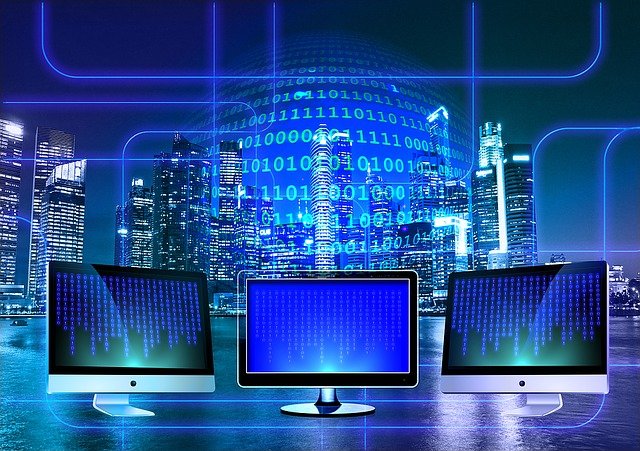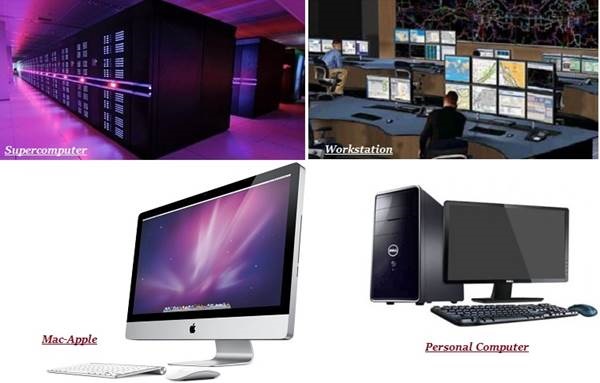The four types of computers are supercomputers, mainframe computers, minicomputers, and personal computers (PCs) or microcomputers.
Supercomputers are incredibly powerful and used for complex tasks like weather forecasting and scientific research. Mainframe computers are large and handle extensive data processing for organizations and institutions. Minicomputers are mid-range computers, often used by small organizations. Personal computers, or PCs, are smaller computers designed for individual use, like desktops, laptops, tablets, and smartphones.
Each type of computer serves different purposes and plays a vital role in our daily lives, from supporting businesses to enabling communication and entertainment.
In this article, we are going to explore 4 types of computers more deeply and their features.
1. Supercomputers

Supercomputers are the most modern and powerful computers on the market. They can handle huge amounts of data very quickly.
They stand out because of their amazing working power, huge saving space, and ability to do multiple tasks at once. A supercomputer usually has thousands or even millions of processors that work together to do very complicated math and models.
These computers are made to do very complicated calculations and handle huge amounts of data. Examples include predicting the weather, modeling the climate, doing scientific research, and simulating building projects.
Large-scale models and calculations that are too hard for regular computers to handle are easy for supercomputers to do.
They’re designed to work best with multiple processors at the same time, which lets them break down big problems into smaller jobs that can be solved at the same time. This makes completion times faster.
Applications and industries where supercomputers are used
Supercomputers are utilized across various industries and research fields where high-performance computing is essential. Some common applications and industries where supercomputers are used include
Scientific research
Supercomputers play a crucial role in scientific research, powering simulations and data analysis in fields such as physics, chemistry, biology, and astronomy. They enable scientists to model complex phenomena, simulate natural processes, and analyze massive datasets to gain insights into fundamental scientific questions.
Weather forecasting and climate research
Supercomputers are indispensable for weather forecasting and climate modeling, where accurate predictions require processing vast amounts of atmospheric data and running complex simulations. They enable meteorologists and climate scientists to predict weather patterns, track hurricanes, and study long-term climate trends with high precision.
Engineering and simulations
Supercomputers are used in engineering applications such as aerodynamics, structural analysis, and fluid dynamics simulations. They allow engineers to design and test new products, optimize manufacturing processes, and simulate real-world scenarios to improve efficiency and performance.
Defense and national security
Supercomputers are employed in defense and national security applications, including cryptography, cybersecurity, and military simulations. They help analyze large datasets, model complex systems, and simulate military scenarios to enhance strategic planning and decision-making.
Healthcare and biomedical research
In healthcare, supercomputers are used for tasks such as medical imaging analysis, drug discovery, and genomics research. They facilitate advanced medical research by processing genomic data, simulating molecular interactions, and accelerating drug development processes.
2. Mainframe computers

Mainframe computers are big, powerful computers that are made to handle a lot of data processing jobs and help many people at the same time.
They are defined by being strong, dependable, and scalable, and they can handle large amounts of data with little to no downtime.
To make sure they keep working and the data is safe, mainframes usually have redundant parts, advanced mistake detection and repair systems, and complex input/output subsystems.
Usage and significance in various sectors
Mainframe computers are widely used across various sectors and industries where reliability, security, and scalability are paramount. Some common applications and sectors where mainframe computers are significant include
Financial institutions
Mainframes are extensively used in the banking and financial sector for processing transactions, managing customer accounts, and running complex financial applications. They provide the high throughput and reliability needed to handle large volumes of financial data and ensure secure and efficient banking operations.
Government agencies
Mainframes play a crucial role in government agencies for tasks such as census data processing, tax administration, and social security management. They support critical government functions by processing vast amounts of data, ensuring data security and integrity, and supporting high-volume transaction processing.
Healthcare
Mainframe computers are utilized in healthcare organizations for managing electronic health records (EHRs), processing medical claims, and running healthcare applications. They provide the processing power and reliability needed to handle sensitive patient data and support healthcare operations efficiently.
Airlines and transportation
Mainframes are used in the airline industry for tasks such as reservation systems, flight scheduling, and passenger management. They support real-time transaction processing, handle large volumes of booking data, and ensure the smooth operation of airline services.
Retail and manufacturing
Mainframe computers are employed in retail and manufacturing sectors for inventory management, supply chain optimization, and order processing. They enable efficient management of inventory, streamline production processes, and support e-commerce and retail operations.
3. Minicomputers

Minicomputers, also known as mid-range computers, are intermediate in size, power, and capabilities between mainframe computers and personal computers.
They offer moderate processing power, storage capacity, and computing resources compared to mainframes but are more powerful than personal computers.
Minicomputers are characterized by their versatility, affordability, and flexibility, making them suitable for small to medium-sized organizations and specialized computing tasks.
Role and relevance in modern computing
Minicomputers play a significant role in modern computing environments, particularly for small organizations, research institutions, and specialized applications. Some key attributes and roles of minicomputers include
Cost-effectiveness
Minicomputers offer a balance between performance and affordability, making them suitable for organizations with limited budgets or computing requirements.
They provide sufficient processing power and resources at a lower cost compared to mainframe computers, making them an attractive option for small businesses and research labs.
Versatility and scalability
Minicomputers are highly versatile and can be configured to meet specific computing needs. They can serve as servers, workstations, or specialized computing platforms, supporting a wide range of applications and tasks.
Additionally, minicomputers can be scaled up or down to accommodate changing computing demands, offering flexibility and adaptability in dynamic computing environments.
Specialized applications
Minicomputers are often used for specialized computing tasks that require moderate processing power and dedicated computing resources. They are commonly deployed in scientific research, engineering design, data analysis, and simulation applications where tailored computing solutions are needed.
Network infrastructure
Minicomputers serve as essential components of network infrastructure, supporting file and print services, database management, and communication services in small to medium-sized networks.
They provide the computing power and resources needed to manage network services efficiently and ensure reliable network operations.
4. Personal computers (PCs) or microcomputers

Personal computers (PCs), also known as microcomputers, are small, relatively inexpensive computers designed for individual use. They come in various forms and configurations, including desktop computers, laptop computers (or notebooks), tablets, and smartphones.
Desktop computers: These are traditional personal computers designed to stay at one location, typically consisting of a monitor, keyboard, mouse, and a central processing unit (CPU) housed in a tower or system unit.
Laptop computers (or notebooks): Laptops are portable personal computers that can be carried around and used on the go. They feature a built-in display screen, keyboard, and touchpad, allowing users to work from virtually anywhere.
Tablets: Tablets are lightweight, handheld devices with a touchscreen interface, designed primarily for web browsing, multimedia consumption, and light productivity tasks. They offer portability and versatility, making them ideal for entertainment and casual computing.
Smartphones: Smartphones are mobile phones with advanced computing capabilities, including internet access, multimedia playback, and app support. They serve as pocket-sized personal computers, enabling users to communicate, access information, and perform various tasks on the go.
Final words
To understand how different and important computing technology is, you need to know about the four types of computers: supercomputers, mainframe computers, minicomputers, and mobile computers. Different kinds of computers help us with different jobs and make scientific discoveries.
They all have their own impact on how we work, connect, and come up with new ideas. By understanding the differences between them, we can better use technology to get more done, increase study, and make our lives better in general.
